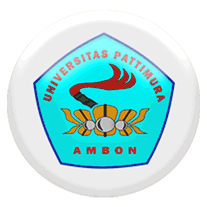THE PERFOMANCE OF THE ARIMAX MODEL ON COOKING OIL PRICE DATA IN INDONESIA
Abstract
Forecasting is crucial for planning, particularly in addressing potential issues. While ARIMA models are commonly used for time series forecasting, they may need more accuracy by overlooking external factors. The ARIMAX model, which incorporates exogenous variables, is employed to enhance accuracy. This study applies the ARIMAX model to forecast cooking oil prices in Indonesia, known for its complex patterns. Using data from the Directorate General of Domestic Trade and Price Stability (2024), the research highlights fluctuating cooking oil prices from 2010 to 2023 every month. Both ARIMA and ARIMAX models are utilized, with domestic fresh fruit bunch (FFB) prices and the COVID-19 pandemic indicator as exogenous variables. Evaluation based on Mean Absolute Percentage Error (MAPE) shows that the ARIMAX model has a MAPE of 17.31%, compared to 17.69% for the ARIMA model. The lower MAPE value for ARIMAX indicates improved forecasting accuracy by incorporating external factors. Thus, the ARIMAX model is recommended for predicting cooking oil prices, offering better accuracy and valuable insights for policymakers and stakeholders.
Downloads
References
S. Makridakis, S. Wheelwright, and R. Hyndman, “FORECASTING: METHODS AND APPLICATIONS,” in The Journal of the Operational Research Society, vol. 35, 1984.
J. D. Cryer and K.-S. Chan, TIME SERIES ANALYSIS WITH APPLICATIONS IN R, vol. 20, no. 2. 2008.
T. Prasetyo, R. A. Putri, D. Ramdhani, Y. Angraini, and K. A. Notodiputro, “COMPARISON OF THE PERFORMANCE OF THE ARIMA , MULTI-LAYER PERCEPTRON , AND RANDOM FOREST METHODS IN FORECASTING PRECIOUS METAL FUTURES PRICES THAT CONTAIN OUTLIERS,” J. Teknol. Inf. dan Ilmu Komput., vol. 11, no. 2, 2024, doi: 10.25126/jtiik.2024117392.
“DATA HARIAN MINYAK GORENG KEMASAN MEI 2023-FEBRUARI 2024.” .
A. A. Hidayat, Mustofa, and A. M. Arlina, “KEBIJAKAN PEMERINTAH DALAM MENGATASI KELANGKAAN MINYAK GORENG PADA MASA PANDEMI COVID-19 DALAM PERSPEKTIF EKONOMI ISLAM,” J. Ekon. dan Bisnis Islam, vol. 10, pp. 20–28, 2023.
N. Sinurat, Z. Alamsyah, and Elwamendri, “DINAMIKA HARGA MINYAK GORENG SAWIT ( MGS ) DAN DAMPAKNYA TERHADAP TERHADAP PERKEBUNAN KELAPA SAWIT INDONESIA,” Sosio Ekon. Bisnis, vol. 19, no. 1, pp. 1–12, 2016.
L. P. Aryanto, M. Adinda, N. Anggreny, and A. R. Lestari, “KEBIJAKAN PEMERINTAH DALAM MENGATASI KELANGKAAN MINYAK GORENG SELAMA PANDEMI COVID-19,” J. Ilm. Pascasarj., vol. 4, no. 1, pp. 27–35, 2024.
W. Adinugroho, “PENDEKATAN CLUSTERING TIME SERIES PADA PERAMALAN HARGA MINYAK GORENG,” J. Ilm. Pop. Median, vol. 4, pp. 47–55, 2021.
N. Halim, S. J. Pririzki, I. Alviari, and D. Y. Dalimunthe, “PREDIKSI HARGA MINYAK GORENG SEBAGAI SUMBER KEBUTUHAN MASYARAKAT DI KOTA PANGKALPINANG,” Semin. Nas. Penelit. dan Pengabdi. pada Masy. 2022, pp. 41–44, 2022.
M. L. S. Putera, “IMPROVISASI MODEL ARIMAX-ANFIS DENGAN VARIASI KALENDER UNTUK PREDIKSI TOTAL TRANSAKSI NON-TUNAI,” Indones. J. Stat. Its Appl., vol. 4, no. 2, pp. 296–310, 2020, doi: 10.29244/ijsa.v4i2.603.
N. Newton, A. Kurnia, and I. M. Sumertajaya, “ANALISIS INFLASI MENGGUNAKAN DATA GOOGLE TRENDS DENGAN MODEL ARIMAX DI DKI JAKARTA,” Indones. J. Stat. Its Appl., vol. 4, no. 3, pp. 545–556, 2020, doi: 10.29244/ijsa.v4i3.694.
A. R. P. Syam, “APPLICATION OF THE AUTOREGRESSIVE INTEGRATED MOVING AVERAGE EXOGENOUS (ARIMAX) WITH CALENDAR VARIATION EFFECT METHOD FOR FORECASTING CHOCOLATE DATA IN INDONESIA AND THE UNITED STATES,” J. Mat. Stat. dan Komputasi, vol. 18, no. 2, pp. 224–236, 2022, doi: 10.20956/j.v18i2.18460.
Elvina Catria, A. A. Putra, D. Permana, and D. Fitria, “ADDING EXOGENOUS VARIABLE IN FORMING ARIMAX MODEL TO PREDICT EXPORT LOAD GOODS IN TANJUNG PRIOK PORT,” UNP J. Stat. Data Sci., vol. 1, no. 1, pp. 31–38, 2023, doi: 10.24036/ujsds/vol1-iss1/10.
W. Hutasuhut H, Amira Anggraeni and R. Tyasnurita, “BAHAN BAKU PLASTIK,” J. Tek. POMITS, vol. 3, no. 2, pp. 169–174, 2014.
R. H. Shumway and D. S. Stoffer, TIME SERIES ANALYSIS AND ITS APPLICATIONS WITH R EXAMPLES, 4th ed. United States of America: Springer International Publishing, 2016.
K. Ameliana and A. Fadilla, “ANALISIS PENGARUH PANIC BUYING DAN HARGA TERHADAP KEPUTUSAN PEMBELIAN MINYAK GORENG PADA MASA PANDEMI COVID-19,” J. Ilm. FEASIBLE, vol. 5, no. 1, pp. 17–27, 2023.
Copyright (c) 2025 Erdanisa Aghnia Ilmani, Fida Fariha Amatullah, Khairil Anwar Notodiputro, Yenni Angraini, Laily Nissa Atul Mualifah

This work is licensed under a Creative Commons Attribution-ShareAlike 4.0 International License.
Authors who publish with this Journal agree to the following terms:
- Author retain copyright and grant the journal right of first publication with the work simultaneously licensed under a creative commons attribution license that allow others to share the work within an acknowledgement of the work’s authorship and initial publication of this journal.
- Authors are able to enter into separate, additional contractual arrangement for the non-exclusive distribution of the journal’s published version of the work (e.g. acknowledgement of its initial publication in this journal).
- Authors are permitted and encouraged to post their work online (e.g. in institutional repositories or on their websites) prior to and during the submission process, as it can lead to productive exchanges, as well as earlier and greater citation of published works.

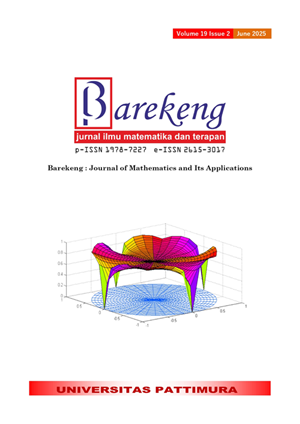
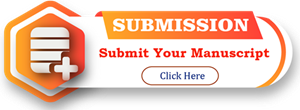

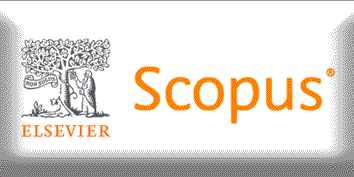
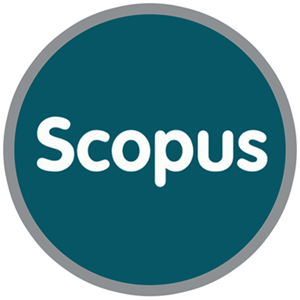
1.gif)
